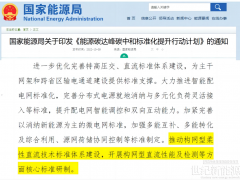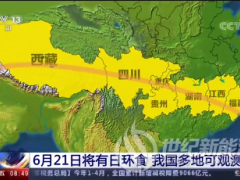虽然如此,特斯拉公司仍在努力在未来几个月内增加其Model 3电动汽车的产量,并且还有另外一个积极的增长目标,即储能产品的产量将大幅增长。
特斯拉公司在2月6日下午发布的特斯拉第四季度和2017年全年财报中表示,计划到2018年,其储能部署的容量至少比2017年增加三倍。
该公司在给股东的公开信中写道:“我们储能产品的生产速度要与Model 3汽车的生产速度相当。”
特斯拉公司推出的名为Powerpacks的大型电池组,可以连接电网,为公用事业和企业提供电力服务,或与太阳能和风力发电场配套使用。该公司还出售电力容量较小的Powerwall设备,为家庭和小型企业提供备用电源等服务。

马斯克表示住宅太阳能部署已受到家用电池供应短缺的影响
特斯拉公司一直认为其储能部门具有巨大的增长潜力,但它已经将汽车业务放在了优先发展位置,这其中包括Model 3电动汽车。而通过此次为其储能部门设定积极增长目标,特斯拉显示出将会更加重视该行业的增长前景。
然而,Model 3电动汽车和特斯拉的电池厂Gigafactory的支出仍然和去年一样,占据特斯拉公司2018年的大部分资本支出,而其汽车业务也带来了大部分收入。
2017年全年,特斯拉公司创造了117.6亿美元的收入,与2016年的70亿美元的收入相比有所提升。2017的收入中只有11.2亿美元来自于其储能和太阳能联合部门。
与此同时,特斯拉公司2017年亏损了22亿美元,而2016年则亏损7.73亿美元。尽管面临巨大的亏空,但特斯拉首席执行官伊隆•马斯克(Elon Musk)在收益电话会议上表示,他对特斯拉可以很快获得GAAP盈利表示乐观。
去年夏天,马斯克在特斯拉公司的储能团队立下军令状,并在推特(Twitter)上打赌,能够在100天内在南澳大利亚州安装100兆瓦的电池储能系统。特斯拉公司最终实现了这一目标,在南澳州詹姆斯敦(Jamestown)附近的风电场旁建造了世界上最大的电池系统。
特斯拉在股东公开信中表示,南澳大利亚州项目的成功促进了大型电池组Powerpack的市场需求。他说:“显而易见,我们在大规模储能方面有着巨大的机遇。”
除了南澳大利亚州项目外,特斯拉公司还在夏威夷考艾岛、美属萨摩亚岛、康涅狄格州,以及加利福尼亚州的多个地点建造了大型储能电池系统。
特斯拉公司日前表示,正在设法与南澳大利亚州达成另一项交易,为家庭住宅安装多达50,000个Powerwall电池,并搭配屋顶太阳能电池板。特斯拉还在家得宝(Home Depot)和劳氏公司(Lowe's)的商店建立的售货亭展示和销售与Powerwall相结合的太阳能电池系统。
其储能业务为特斯拉来带来多种价值,这是特斯拉在消费者驱动的汽车销售业务之外实现多样化经营的一种方式,但这也可能是一个反复无常的市场。随着公用事业公司希望增加更多的清洁能源,降低煤炭和核能的使用量,储能部署将成为一个主要的增长市场。
特斯拉公司表示,2017年第四季度部署了143兆瓦时的储能产品,比上年同期增长了45%。并表示,去年在南澳大利亚州建造的129兆瓦时电池储能部署将在2018年第一季度得到认可。
尽管特斯拉公司的储能产品销售正在大幅增长,但目前似乎利润率相对较低。太阳能和储能联合部门的毛利率在2017年第四季度仅为5.5%。而2017年第三季度该部门的毛利率为25.3%。
该公司表示,其太阳能业务部门季度销售量持续下滑,尽管第四季度应该是部署的好时机。但是并没有达到预期目标。特斯拉公司报告说,2017年第四季度仅部署了87兆瓦的太阳能,比2017年第三季度的部署量少了20%。
特斯拉公司表示,“由于我们今年早些时候决定撤消某些销售渠道,并将重点放在利润率更高的项目上,导致太阳能发电产品的销量下降。此外,太阳能部署受到供电需求不足的影响,因为客户希望在自家的太阳能光伏发电系统中使用Powerwall电池,而在短期内这些因素可能会继续受到影响,但我们预计今年晚些时候将恢复增长。”
特斯拉公司表示,预计其太阳能和储能联合部门的毛利率将在2018年有所提高,因为它使得更多的Powerpacks和Powerwalls能够以更低的成本生产。这通常是一种增加生产和削减成本的工作方式。
目前,特斯拉的储能部门仍处于刚刚起步阶段,特斯拉目前正在开展的其他项目可能会阻碍其规模的扩展。
特斯拉公司表示,增加Model 3产品的时间表与上次的财报电话会议所说的相同。特斯拉没有提到Model 3发展目标,但在其股东信中表示:“我们之前的Model 3的经验教训表明,难以准确预测特定时间点的特定生产率。”
由于设定了多个业务目标,特斯拉储能部门的业务可能会面临成长的痛苦。例如,为了迅速地建立南澳大利亚电池农场,特斯拉公司转而采用了三星公司提供的电池,而不是在其在Gigafactory自己生产的电池。因此,该公司仍然面临业务过于分散的风险。(中国储能网独家编译,转载请注明来源)
原文如下:
Tesla Plans to Triple Battery Deployments in 2018
But margins are pretty slim for the emerging energy storage division. Meanwhile, Tesla’s solar business continues to decline.
Katie Fehrenbacher February 08, 2018
Tesla said residential solar deployments have been affected by a short supply of home batteries.
While Tesla is struggling to ramp up production of its Model 3 car in the coming months, it’s got another aggressive growth target in front of it: a big production ramp-up for its energy storage products.
In Tesla’s fourth-quarter and full-year 2017 earnings report released Wednesday afternoon, the company said that it plans to at least triple the amount of energy storage capacity it deploys in 2018 compared to 2017.
“[T]he production ramp of our storage products is just as steep as with Model 3,” the company wrote in its letter to shareholders.
Tesla sells large-scale battery packs, called Powerpacks, that can be plugged into the electric grid and provide services for utilities and companies or be paired with solar and wind farms. The company also sells the smaller Powerwall unit that provides services, such as backup power, to homes and small businesses.
Tesla has long maintained that it sees big growth potential in its energy storage division, but it has prioritized its automotive business, including the Model 3. By setting aggressive growth targets for its energy storage division for the year, Tesla is showing it’s finally taking the prospect of growth in the sector more seriously.
However, the Model 3 and Tesla’s massive battery factory, the Gigafactory, will still get the bulk of the company’s capital spend for this year -- as they did last year. The automotive business also brings in much of the revenue.
For the full year of 2017, Tesla generated $11.76 billion in revenue, which was a jump from the $7 billion in revenue it generated in 2016. Just $1.12 billion of that revenue in 2017 was from its combined energy storage and solar division.
At the same time, Tesla lost $2.2 billion last year, compared to a loss of $773 million for 2016. Despite the massive negative net income, Tesla CEO Elon Musk said on the earnings call that he is “optimistic” that Tesla could be GAAP profitable soon -- “with no asterisk.”
Musk threw down the gauntlet last summer for the company's energy storage group and made a bet via Twitter that Tesla could install 100 megawatts of energy storage in South Australia in 100 days' time. Tesla achieved that goal and built the world’s biggest battery farm next to a wind farm near Jamestown in South Australia.
Tesla said in its shareholders' letter that the success of the South Australia project has led to “an increase in demand” for the Powerpack. “It’s clear that there is a huge opportunity for us in large-scale energy storage,” wrote Tesla.
In addition to the South Australia project, Tesla has also built large battery farms on the Hawaiian island of Kauai, on the island of American Samoa, in Connecticut, and on multiple sites in California.
This week Tesla said it managed to score another deal with South Australia to install up to 50,000 Powerwall batteries in homes, paired with rooftop solar panels. Tesla is also building kiosks at Home Depot and Lowe’s stores that would show off and sell the Powerwall, combined with solar panels.
The energy storage business is valuable for Tesla in a variety of ways. It’s a way for Tesla to diversify outside of the consumer-driven business of selling cars, which can be a fickle market. It’s also a major growth market in its own right as utilities look to add more clean energy and reduce their reliability on coal and nuclear.
Tesla said that in the fourth quarter of 2017 it deployed 143 megawatt-hours' worth of energy storage products, growing installations 45 percent from the same quarter the year before. The 129 megawatt-hours of energy storage built in South Australia last year will be recognized in the first quarter of 2018, Tesla said.
While Tesla’s energy storage products are seeing significant growth, they appear to have relatively low margins for the time being. The combined gross margin for the division that comprises both solar and energy storage was 5.5 percent in the fourth quarter of 2017. That’s compared to a 25.3 percent gross margin for the division in the third quarter of 2017.
Tesla’s solar division continues to decline quarter-over-quarter, though it was supposed to right-side this quarter, according to the company. However, that prediction did not come to pass. Tesla reported that in the fourth quarter of 2017 it deployed just 87 megawatts of solar, which was 20 percent less than the amount deployed in Q3 2017.
"Solar [megawatts] deployed declined as volumes continue to be impacted by our decision to close certain sales channels earlier this year and to focus on projects with better margins," Tesla stated. "In addition, solar deployments were affected by the short supply of Powerwalls for customers who wanted solar plus Powerwall in their house. While volumes may continue to be impacted by these factors over the near term, we expect growth to resume later this year."
Tesla said it expects that the gross margin of the combined energy storage and solar unit will improve as it makes more Powerpacks and Powerwalls and gets better at manufacturing them at a lower cost. That’s usually the way it works: ramp up production and cut costs.
Right now Tesla’s energy storage division is still in a fairly nascent phase. And scaling it up could be hampered by all the other efforts that Tesla is currently working on.
Tesla says its timeline to ramp up Model 3 production is the same as it was last earnings call (delayed at least twice in the past, but not a third time). Tesla hedged its Model 3 goals, though, by stating in its shareholder letter: “Our prior experience on the Model 3 ramp has demonstrated the difficulty of accurately forecasting specific production rates at specific points in time.”
With so many balls in the air, Tesla’s ramp of its energy storage division could face growing pains. For instance, in order to build the South Australian battery farm so quickly, Tesla turned to Samsung to supply the batteries instead of making them itself at the Gigafactory. The company continues to risk spreading itself too thin.
 微信客服
微信客服 微信公众号
微信公众号









0 条